Best Montessori Toys For Babies of All Age

Montessori principles and toys not only support a baby's holistic development but also lay the groundwork for a lifelong love of learning. It prioritizes a child's natural inclination to learn through hands-on exploration.
When it comes to selecting Montessori toys for your baby, it's essential to consider their age and developmental stage. The beauty of Montessori toys lies in their simplicity, open-endedness, and natural materials. Here are some top picks for babies of every age.
1. Soft Mobiles (0-6 months)

Soft mobiles are perfect Montessori toys for newborns as they provide visual stimulation without overwhelming their developing eyesight.
The gentle movement and high-contrast patterns engage their attention, promoting early visual tracking skills and laying the foundation for visual development.
2. High-Contrast Cards (0-6 months)

High-contrast cards are designed to cater to the visual preferences of infants and newborns. The bold patterns and contrasting colors attract their attention.
They also support the development of visual focus and tracking, crucial skills during the early months of life.
3. Soft Rattles (0-6 months)
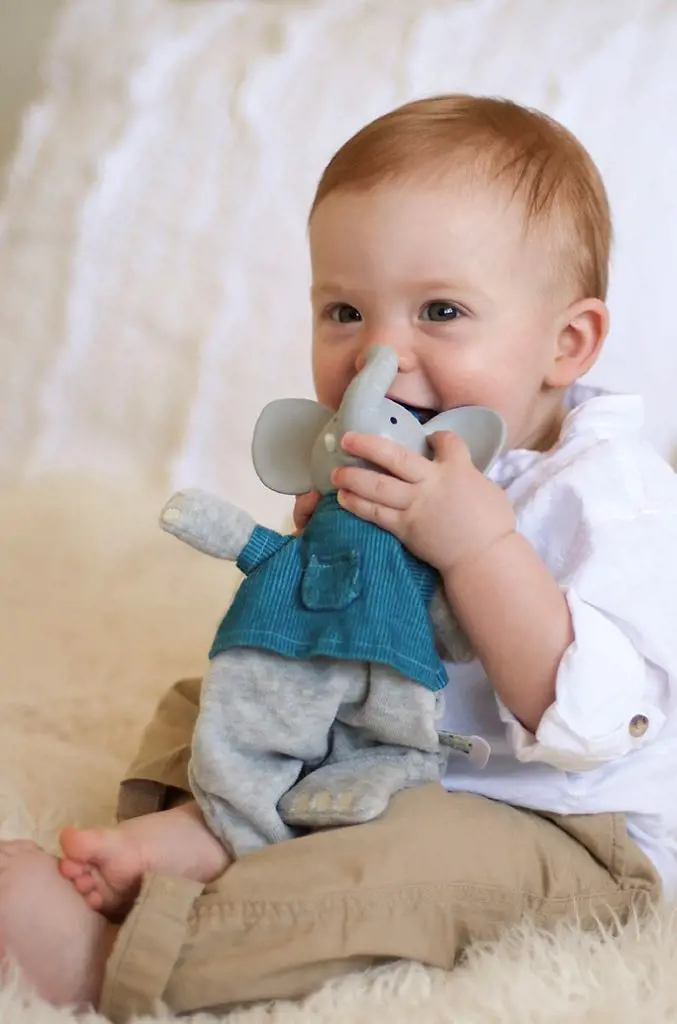
Soft rattles are ideal for newborns as they offer auditory stimulation in a gentle manner.
The soft material is safe for mouthing, and the subtle sound engages their auditory senses, contributing to early sensory exploration and cognitive development.
4. Baby Safe Mirrors (0-6 months)

Baby-safe mirrors are perfect for infants who are captivated by their own reflections. This aids in the development of self-awareness and visual tracking skills.
The unbreakable material of the mirror ensures a secure exploration of their image.
5. Grasping Toys (0-6 months)

Grasping toys are designed for the early months when babies are developing their grasp reflex. The simple shapes and textures encourage them to explore and strengthen hand muscles.
They refine fine motor skills and hand-eye coordination, setting the stage for future manipulation and tool use.
6. Gym And Play Mat (0-12 months)

A versatile play mat provides a safe space for infants to explore and develop motor skills. It encourages tummy time, rolling, and reaching, fostering physical strength and coordination.
Tummy time on cushioned surfaces strengthens neck and core muscles, preparing for crawling and rolling. You can also hang some toys over it which encourages reaching and grasping, further refining motor skills.
7. Teething Rings (0-12 months)

During the teething phase of babies, usually between 4 and 7 months old, the textured surfaces of teething ring sore gums and offer relief. The safe, chewable material eases gums and helps develop the baby's tactile senses.
This Montessori toy for teething babies also encourages mouthing and exploration, aiding sensory development.
8. High-Contrast Soft Fabric Books (6-12 months)

Soft fabric books with high-contrast patterns are introduced around six months when babies are starting to grasp and explore objects.
The tactile experience and bold patterns stimulate their developing senses and lay the foundation for an early interest in books.
9. Nesting and Stacking Toys (6-12 months)

Nesting and stacking toys are introduced as babies begin to sit up and manipulate objects with intent. Different-sized bowls and rings inspire sorting and stacking activities.
They challenge problem-solving skills, develop hand-eye coordination, and introduce size discrimination. These also toys support the understanding of spatial relationships.
10. Object Permanence Boxes (6-12 months)

Object permanence boxes are introduced around six months as babies start to understand that objects exist even when out of sight.
Discovering hidden objects under flaps cultivates curiosity and fosters understanding of object permanence. This early introduction enhances cognitive development and memory skills.
11. Montessori Puzzle Balls (1 year olds)

Montessori puzzle balls are introduced around one year when toddlers are refining their fine motor skills. Opening and closing compartments challenge fine motor skills and problem-solving abilities.
Discovering hidden treasures within fuels curiosity and rewards exploration. The manipulation of puzzle pieces encourages hand-eye coordination and spatial awareness.
12. Push and Pull Toys (1 year olds)

Push and pull toys are wheeled toys like cars or animals that strengthen gross motor skills and coordination. These are perfect for toddlers who are learning to walk.
These toys provide stability, aiding in balance and coordination development, and also encourage a sense of independence as toddlers explore mobility. It is good as both indoor and outdoor toys.
13. Musical Instruments (1-3 year olds)

Musical instruments like shakers, drums, or maracas are introduced between one to three years old when toddlers show an interest in exploring sounds. Playing instruments enhances auditory discrimination skills and fosters a sense of creativity and self-expression.
It engages auditory senses, encourages rhythm exploration, and sparks creativity. Creating sounds develops self-expression and lays the foundation for musical appreciation.
14. Dollhouse with Simple Figures (1-3 year olds)
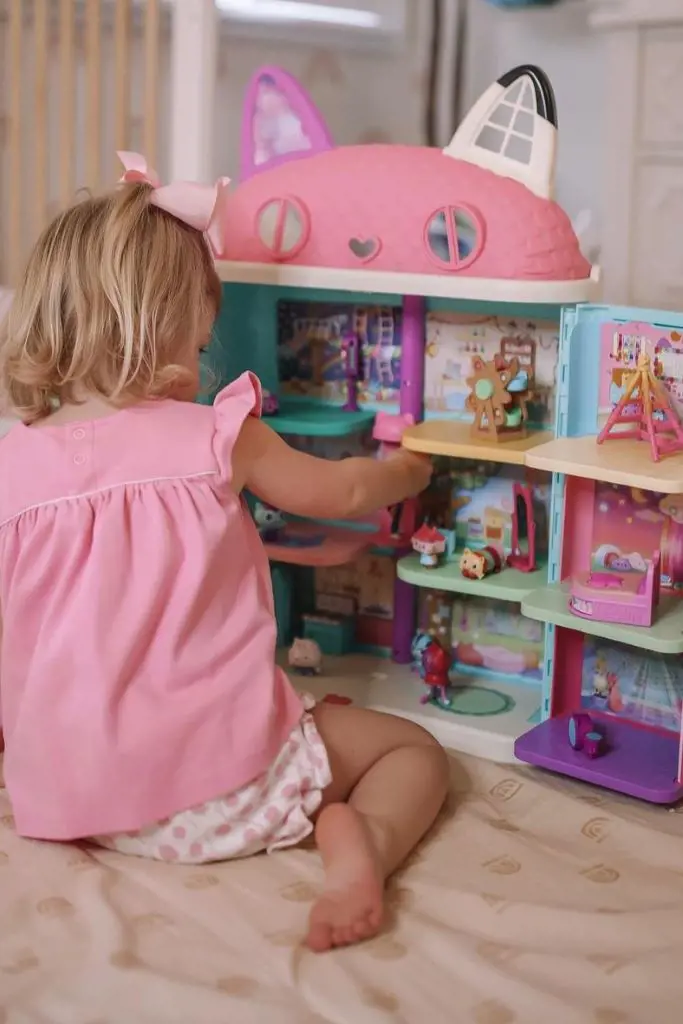
Dollhouses with simple figures are introduced during the toddler years to encourage imaginative play. Toddlers explore narratives, fostering creativity, language development, and social skills.
Social and emotional development through imaginative play with dollhouse is nurtured through storytelling and role-playing activities.
15. Walking Push Toy (1-3 year olds)
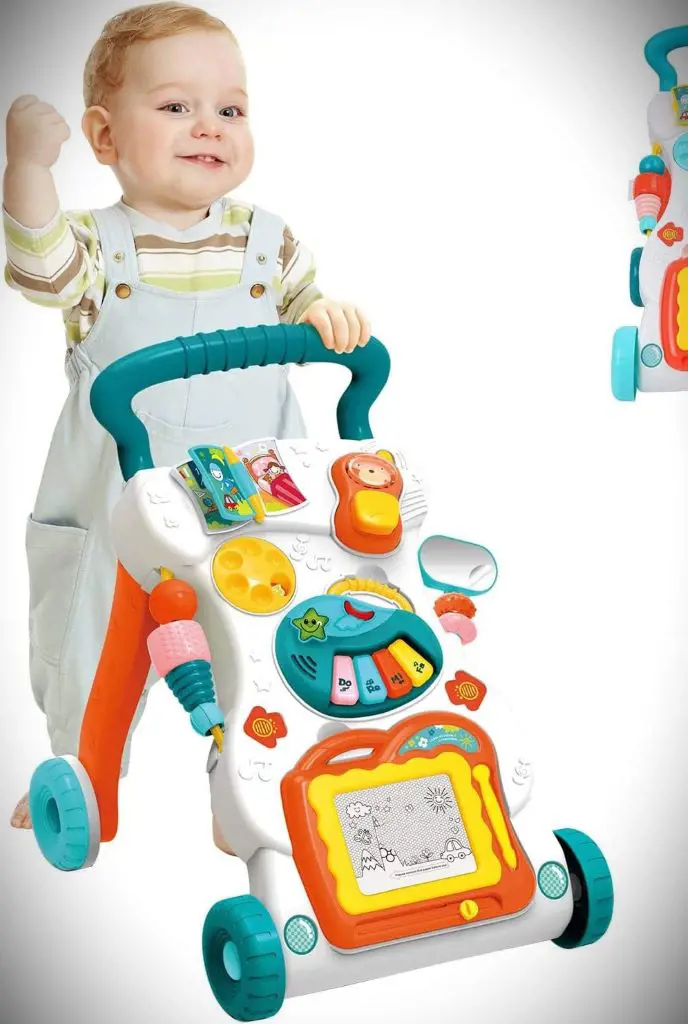
Walking push toys are introduced when toddlers are transitioning from crawling to walking. These toys provide support for early walkers, promoting balance and coordination while allowing them to explore their newfound mobility.
It also strengthens leg muscles and promotes balance. Walking push toys encourages independent movement, exploration of surroundings, and confidence building. Later when they get older, you can buy them electric ride-on toys also.
16. Wooden Puzzles (2-3 year olds)

Wooden puzzles with large pieces are perfect for toddlers aged two to three. Chunky pieces with colorful pictures or shapes challenge problem-solving skills and spatial reasoning.
The simplicity of the puzzle pieces encourages fine motor skill development as toddlers work to fit the pieces together. Furthermore, completing puzzles boosts self-esteem and introduces concepts like matching and sorting.
17. Building Blocks (2-3 year olds)
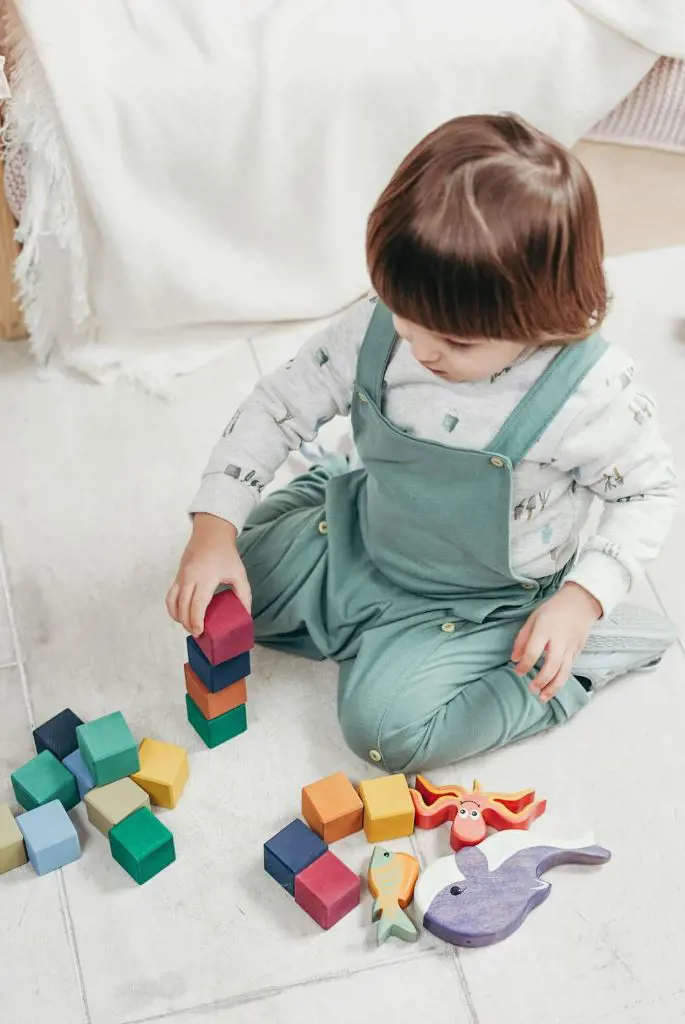
Building blocks are introduced around two to three years when toddlers are ready for more complex construction play. Open-ended building with natural blocks fosters creativity and imagination.
These blocks support imaginative play, creativity, and the development of spatial awareness. Stacking, balancing, and creating structures also develop fine motor skills and problem-solving abilities.
18. Lacing Beads (2-3 year olds)
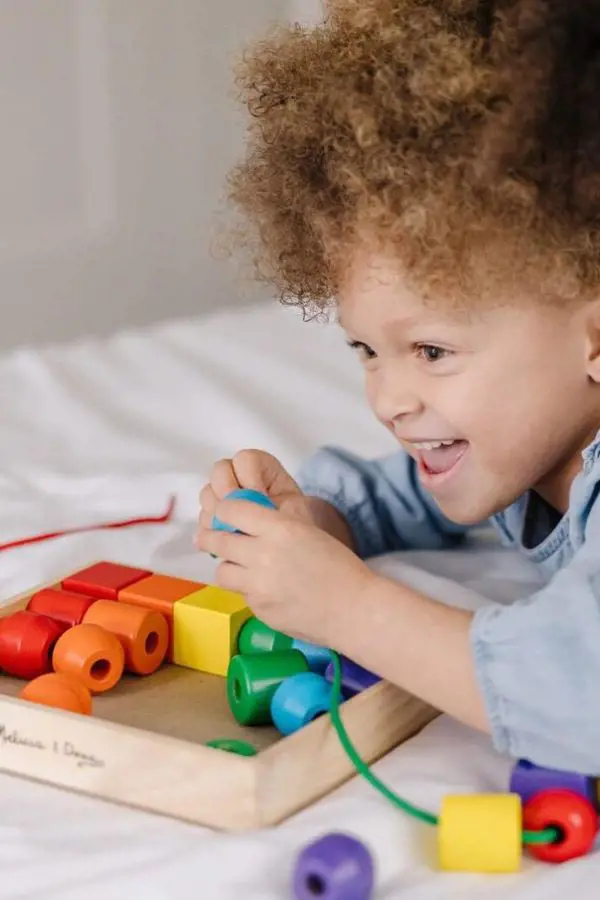
Lacing beads are introduced around two to three years to promote fine motor skills and hand-eye coordination. Threading large beads on strings strengthens fine motor skills and hand-eye coordination.
It builds concentration and patience, playfully introducing pre-writing skills.
19. Art Supplies (2-4 year olds)

Art supplies such as crayons, paints, and brushes are introduced as toddlers transition to preschool age. These supplies encourage self-expression, creativity, and the exploration of colors and textures.
It helps unleash their artistic expression and develop fine motor skills.
20. Counting Bears (2-4 year olds)

Counting bears are introduced between 24 to 48 months old to provide a hands-on approach to early math concepts. Manipulating colorful bears in different quantities introduces counting concepts and early numerical skills.
Similarly, sorting by size or color expands cognitive abilities and encourages imaginative play.







